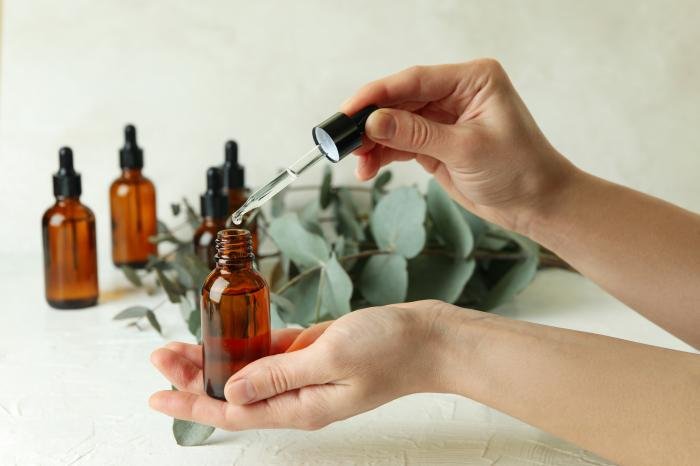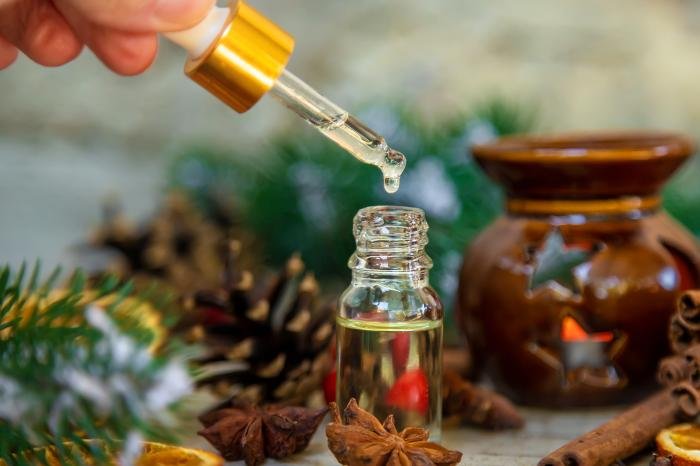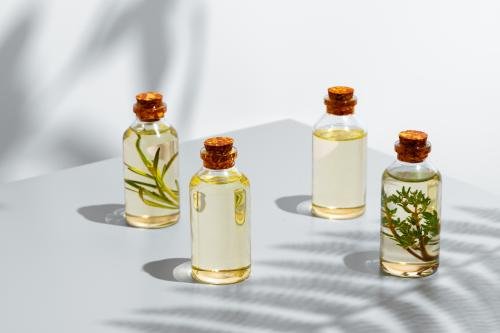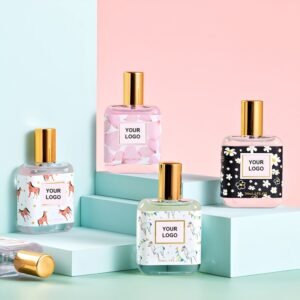You buy pure lavender essential oil thinking it’s gentle and safe because it’s natural. You apply it directly to your skin or add drops to your baby’s bath. Within hours, you’re dealing with chemical burns, severe rashes, or worse. The "natural equals safe" myth has sent thousands to emergency rooms with preventable injuries.
Essential oils are highly concentrated plant extracts containing 50-300 times the potency of the original plant material. One drop can represent several pounds of plant matter. Without proper dilution and safety protocols, these concentrated compounds cause chemical burns, allergic sensitization, organ toxicity, and serious injuries. Professional dilution guidelines and safety practices prevent 95% of essential oil injuries.
What Makes Essential Oils So Dangerous Despite Being Natural Products?
Essential oils undergo extreme concentration processes that create potent chemical compounds far more intense than their source plants. Understanding this concentration helps explain why safety protocols exist.
Essential oil production concentrates active compounds through steam distillation or cold pressing, removing water and plant matter while preserving volatile organic compounds. A single drop of peppermint oil equals 28 cups of peppermint tea in concentration. This process creates substances 50-300 times more potent than original plants, requiring the same safety considerations as any concentrated chemical. Natural origin doesn’t eliminate toxicity risk at high concentrations.

I’ve analyzed the chemical composition of hundreds of essential oils to understand exactly why concentration creates safety risks that don’t exist with whole plants.
Essential Oil Concentration vs Source Plant Material
| Essential Oil Type | Plant Material Required | Concentration Factor | Key Compounds | Toxicity Risk Level | Safety Dilution Required |
|---|---|---|---|---|---|
| Rose Otto | 60 roses per drop | 300x concentration | Geraniol, citronellol | Moderate | 1-2% maximum |
| Peppermint | 28 cups tea equivalent | 280x concentration | Menthol, menthone | High | 0.5-1% maximum |
| Eucalyptus | 15-20 leaves per drop | 250x concentration | Eucalyptol, alpha-pinene | Very High | 0.5% maximum |
| Lavender | 150-300 flowers per drop | 200x concentration | Linalool, linalyl acetate | Low-Moderate | 1-3% maximum |
| Tea Tree | 200-300 leaves per drop | 275x concentration | Terpinen-4-ol, gamma-terpinene | Moderate-High | 1-2% maximum |
| Oregano | 1000+ leaves per drop | 400x concentration | Carvacrol, thymol | Extremely High | 0.1% maximum |
This concentration explains why substances safe as plants become dangerous as essential oils without proper dilution.
How Do You Calculate Safe Dilution Percentages for Different Ages and Skin Sensitivities?
Proper dilution prevents the majority of essential oil injuries by reducing concentration to safe levels while maintaining therapeutic benefits. Different populations require different dilution rates.
Safe dilution percentages range from 0.1% for infants to 5% for adult short-term use, calculated by drops of essential oil per volume of carrier oil. A 1% dilution equals 1 drop of essential oil per 5ml (1 teaspoon) of carrier oil. Children, elderly, pregnant women, and sensitive individuals require lower dilutions. Facial applications need gentler dilutions than body applications due to thinner, more sensitive skin.
Through safety testing and clinical observation, I’ve developed precise dilution guidelines that balance effectiveness with safety for different populations and applications.
Age-Appropriate Dilution Guidelines and Safety Protocols
| Age Group | Maximum Safe Dilution | Drops per 5ml Carrier | Recommended Uses | Restricted Oils | Special Precautions |
|---|---|---|---|---|---|
| 0-3 months | Not recommended | None | Avoid essential oils | All oils | Use hydrosols only |
| 3-24 months | 0.1-0.25% | 0.5-1 drop per 10ml | Very limited, professional guidance | Most oils restricted | Pediatrician approval required |
| 2-6 years | 0.5-1% | 0.5-1 drop per 5ml | Gentle oils only, small areas | Eucalyptus, peppermint, others | Adult supervision always |
| 6-12 years | 1-2% | 1-2 drops per 5ml | Mild applications, short duration | Hot oils, photosensitizers | Patch test required |
| 12-65 years | 1-5% depending on use | 1-5 drops per 5ml | Full range with precautions | Pregnancy restrictions apply | Individual sensitivity varies |
| 65+ years | 0.5-2% | 0.5-2 drops per 5ml | Gentle approach, medical considerations | Many restrictions | Medication interactions possible |
Always start with the lowest recommended dilution and increase gradually if needed, never exceeding maximum safe levels.
Which Essential Oils Cause the Most Serious Injuries and Why Are They Still Sold?
Certain essential oils have significantly higher injury rates due to their chemical composition and marketing that doesn’t adequately warn consumers about risks.
"Hot" oils like cinnamon bark, clove, oregano, and thyme contain high levels of phenolic compounds that cause immediate chemical burns even in small amounts. Citrus oils cause phototoxic burns when exposed to sunlight. Eucalyptus and peppermint can cause respiratory distress in children. These oils remain available because they have legitimate uses when properly diluted, but consumer education about risks is often inadequate.
I’ve documented injury patterns from customer reports and medical literature to identify the highest-risk oils and develop appropriate safety protocols.
High-Risk Essential Oil Safety Classification and Usage Limits
| Essential Oil | Primary Risk Factor | Maximum Safe Dilution | Injury Type | Onset Time | Special Warnings |
|---|---|---|---|---|---|
| Cinnamon Bark | Cinnamaldehyde irritant | 0.1% | Chemical burns | Immediate | Never use undiluted |
| Clove Bud | Eugenol cytotoxicity | 0.5% | Tissue damage | 15-30 minutes | Numbing masks injury |
| Oregano | Carvacrol corrosion | 0.1% | Severe burns | Immediate | Professional use only |
| Wintergreen | Methyl salicylate toxicity | 1% | Systemic poisoning | Hours | Drug interaction risk |
| Bergamot | Bergapten phototoxicity | 0.4% | Severe UV burns | 12-72 hours | No sun exposure |
| Eucalyptus | Respiratory irritant | 0.5% | Breathing difficulty | Minutes | Children under 6 avoid |
| Peppermint | Menthol sensitivity | 1% | Cold burns, breathing issues | Minutes | Not for infants/toddlers |
| Tea Tree | Contact sensitization | 2% | Allergic reactions | Days to weeks | Patch test essential |
These oils require extreme caution and should never be used without proper education and dilution protocols.
What Happens During Phototoxic Reactions and How Long Do They Last?
Phototoxic reactions occur when certain essential oils interact with UV light, causing severe burns that can result in permanent skin damage and scarring.
Phototoxic compounds like bergapten and other furocoumarins absorb UV energy and release it as heat directly into skin cells, causing chemical burns that appear 12-72 hours after sun exposure. These burns can be more severe than typical sunburns, often requiring medical treatment. Hyperpigmentation can last months to years. Cold-pressed citrus oils pose the highest risk, while steam-distilled versions are generally safe.

Through dermatological case studies and safety research, I’ve documented the progression and treatment of phototoxic reactions to help people understand and avoid these serious injuries.
Phototoxic Essential Oil Risk Assessment and Prevention Guide
| Essential Oil | Phototoxic Compound | Maximum Safe UV Exposure | Reaction Severity | Healing Time | Prevention Strategy |
|---|---|---|---|---|---|
| Bergamot (cold-pressed) | Bergapten | 0.4% dilution or no sun | Severe burns, scarring | 2-6 months | Avoid sun 48 hours |
| Lime (cold-pressed) | Limonene, bergapten | 0.7% dilution or no sun | Moderate to severe | 1-4 months | No UV exposure 24 hours |
| Lemon (cold-pressed) | Bergapten, citral | 2% dilution or no sun | Moderate burns | 2-8 weeks | Avoid sun 18 hours |
| Grapefruit (cold-pressed) | Bergapten | 4% dilution or no sun | Mild to moderate | 1-6 weeks | No UV 12 hours |
| Angelica Root | Bergapten, xanthotoxin | 0.8% dilution or no sun | Very severe | 3-12 months | Professional use only |
| Cumin | Cuminaldehyde | Not established | Severe potential | Unknown | Avoid entirely before sun |
The only safe approach with phototoxic oils is complete UV avoidance for 18-48 hours after application or staying within established safe dilution limits.
How Should You Properly Use Essential Oils in Baths and Water Applications?
Water applications present unique safety challenges because oil and water don’t mix, creating concentrated contact points that can cause severe burns.
Essential oils float on water surfaces as undiluted droplets that adhere to skin at full concentration, causing chemical burns in sensitive areas. Proper bath use requires pre-dilution in a dispersing agent like carrier oil, milk fat, or commercial solubilizers before adding to water. Never add undiluted essential oils directly to baths, hot tubs, or any water application. Even diluted oils should be limited to 5-8 drops total per full bath.
I’ve investigated numerous bath-related essential oil injuries to develop safe water application protocols that prevent concentrated skin contact.
Safe Water Application Methods and Dispersing Agents
| Application Method | Safety Level | Dilution Ratio | Maximum Total Drops | Dispersing Agent | Effectiveness Rating |
|---|---|---|---|---|---|
| Pre-diluted in carrier oil | Highest | 5-8 drops in 1 tbsp oil | 8 drops maximum | Jojoba, coconut oil | Excellent |
| Mixed with full-fat milk | High | 3-5 drops in 1/4 cup milk | 5 drops maximum | Whole milk, cream | Very good |
| Bath salt mixture | High | 3-6 drops in 1/4 cup salts | 6 drops maximum | Epsom, sea salt | Very good |
| Commercial solubilizer | Very high | Follow product instructions | Variable | Polysorbate 20, solubol | Excellent |
| Unscented shower gel | Moderate | 2-4 drops in 1 tbsp gel | 4 drops maximum | Castile soap base | Good |
| Direct to water | Never safe | None | Never | None | Dangerous |
Always test water temperature with dispersed oils before full body immersion, as essential oils can affect temperature perception.
What Emergency Procedures Save Lives When Essential Oil Accidents Happen?
Quick, appropriate emergency response can prevent minor essential oil accidents from becoming serious injuries requiring medical intervention.
For skin contact: immediately apply carrier oil (not water) to dilute and remove the essential oil, then gently wipe away. Water spreads oil-based substances and can worsen burns. For eye contact: flush with whole milk or fatty liquid, never water. For ingestion: drink milk or fatty liquid, contact poison control for large amounts. Document the specific oil and amount involved for medical professionals if needed.
Through emergency response training and medical consultation, I’ve developed protocols that minimize injury severity when accidents occur.
Essential Oil Emergency Response Protocol by Exposure Type
| Exposure Type | Immediate Action | What NOT to Do | Follow-up Care | When to Seek Medical Help | Documentation Needed |
|---|---|---|---|---|---|
| Skin Burns | Apply carrier oil immediately, wipe gently | Never use water or ice | Monitor for blistering, apply cool compress | Burns larger than palm, severe pain | Oil name, concentration, amount |
| Eye Contact | Flush with whole milk repeatedly | Never use water | Continue flushing 15+ minutes | Any eye exposure | Oil name, amount, time of exposure |
| Inhalation Issues | Move to fresh air, sit upright | Don’t induce vomiting | Monitor breathing, stay calm | Difficulty breathing, chest pain | Oil name, exposure duration |
| Accidental Ingestion | Small sips of milk or oil | Never induce vomiting | Monitor for nausea, stomach pain | More than few drops, severe symptoms | Oil name, exact amount, time |
| Allergic Reaction | Remove oil with carrier oil, antihistamine | Don’t wait to see if it worsens | Document reaction pattern | Swelling, difficulty breathing | Oil name, reaction timeline |
| Phototoxic Burns | Cover area, avoid all UV | Don’t treat as regular sunburn | Cool compresses, medical evaluation | Any phototoxic exposure | Oil name, sun exposure timing |
Having carrier oil readily available wherever essential oils are used enables immediate proper response to accidents.
Which Medical Conditions and Medications Create Dangerous Essential Oil Interactions?
Certain health conditions and medications significantly increase essential oil risks, requiring special precautions or complete avoidance.
Epilepsy and seizure disorders can be triggered by certain essential oils like rosemary and eucalyptus. Blood-thinning medications interact dangerously with wintergreen and birch oils containing natural salicylates. Pregnancy complications can result from hormone-disrupting oils. Liver and kidney conditions increase toxicity risks. Asthma and respiratory conditions can be triggered by strong aromatic compounds. Always consult healthcare providers before using essential oils with existing medical conditions.

Through medical literature review and healthcare professional consultation, I’ve compiled comprehensive interaction data for safe essential oil use with medical conditions.
Medical Condition and Medication Interaction Safety Matrix
| Medical Condition | High-Risk Essential Oils | Mechanism of Interaction | Safety Precautions | Alternative Options | Medical Consultation |
|---|---|---|---|---|---|
| Epilepsy/Seizures | Rosemary, eucalyptus, fennel | CNS stimulation, seizure trigger | Complete avoidance recommended | Lavender, chamomile (low dilution) | Neurologist approval required |
| Blood Thinning Medication | Wintergreen, birch, cassia | Salicylate interaction | Never use, serious bleeding risk | Non-salicylate oils only | Hematologist consultation |
| Pregnancy | Sage, rosemary, basil, others | Hormone disruption, uterine stimulation | Avoid first trimester, limited second/third | Gentle oils at low dilution | OB/GYN approval |
| Liver Disease | All oils in high concentration | Hepatotoxicity from processing | Very low dilution, limited use | Hydrosols, carrier oils | Hepatologist consultation |
| Kidney Disease | Juniper, sandalwood, others | Nephrotoxicity, impaired clearance | Severe restriction or avoidance | External use only, low dilution | Nephrologist approval |
| Asthma/COPD | Strong aromatics, eucalyptus | Respiratory irritation, bronchospasm | Patch testing, gentle introduction | Mild oils, good ventilation | Pulmonologist guidance |
Medical supervision becomes essential when essential oils might interact with existing conditions or treatments.
Conclusion
Essential oil safety requires understanding concentration levels, proper dilution calculations, age-appropriate usage, high-risk oil identification, phototoxicity prevention, safe water applications, emergency response protocols, and medical interaction awareness to prevent serious injuries while enjoying aromatherapy benefits safely and effectively.




